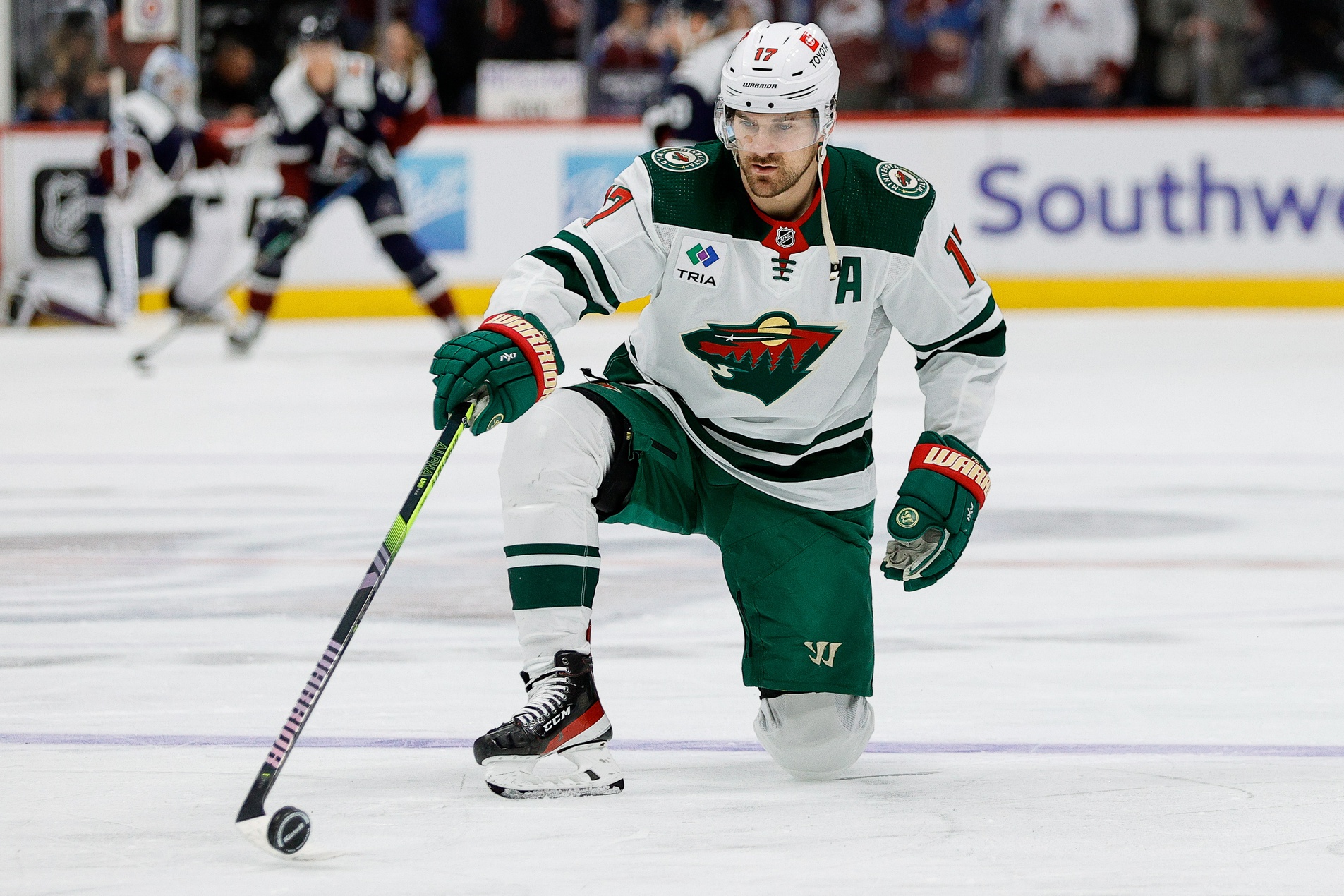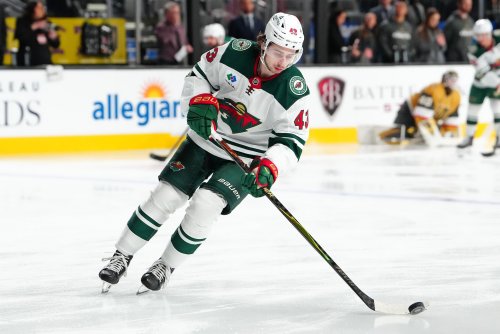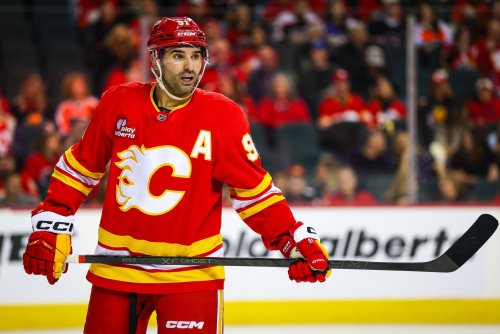
July 1, 2025. Minnesota Wild fans have mentally circled this day on the calendars in their heads for years. On that day, the bulk of the salary cap penalties for Zach Parise and Ryan Suter expire, freeing up a touch more than $13 million for Minnesota. What can a team that has Kirill Kaprizov, Joel Eriksson Ek, and Matt Boldy locked in for discount prices do with an extra $13 million to throw around?
Any expectations fans are building are destined to disappoint. It'd be nice to see the Wild hit the market and make the kind of franchise-changing move that the Florida Panthers made in acquiring Matthew Tkachuk or the New York Rangers did in signing Artemi Panarin. It probably was never going to happen, though, even with CapFriendly projecting the Wild for $28.66 million of cap space (under a $92 million salary cap).
The Wild would always need to give Kaprizov a raise, although his contract expires in 2026, and extend Brock Faber once his ELC wraps up in the summer of 2025. Those are just the biggest ticket items. Young centers Marco Rossi and Marat Khusnutdinov will hit RFA status just as that $13 million falls off the cap, as will top goalie prospect Jesper Wallstedt. Even with a (presumably) rising cap and the dead money expiring, those things will offset Minnesota's ability to throw some real dollars around.
Let's make some conservative salary projections to illustrate this point. Say Faber takes a clone of Boldy's sweetheart deal, earning $7 million per year against the cap. As for Wallstedt, let's say he earns $3.5 million annually on his next deal, about $1 million less than Spencer Knight took with the Florida Panthers after 36 career games. Now we'll mark Rossi and Khusnutdinov's bridge deals clock at $2.5 and $1.5 million, respectively.
That's probably the best-case scenario for these four upcoming contracts, and even then, they will come in at a $14.5 million price tag. Suddenly, the Wild must fill eight roster spots (Minnesota would have 15 of 23 accounted for) and $14 million to do it with. That's much more flexibility than they've had in the past few offseasons. Still, when you're earmarking a good chunk of that to Kaprizov going forward, it hurts Minnesota's ability to get any long-term impact help.
So, this windfall the State of Hockey has built in its heads will be less a Scrooge McDuck pool and more of a Mitch Hedberg-esque above-ground pool of money. Where did that spending power go?
Oh, no...
Please, make it stop. We beg you.
Fine, whatever, hopefully you got it out of your system, and we can look ahead to...
We're not alarmed; we're just desperate for these to end. Please, Minnesota, we have a family.
To recap: the summer the Wild are having $13 million of dead money disappear from the salary cap completely, they're spending money on the following extensions from the last 12 months:
Mats Zuccarello (age-38 season): $4.125M
Marcus Foligno (34): $4M
Ryan Hartman (31): $4M
Freddy Gaudreau (32): $2.1M
Zach Bogosian (35): $1.25M
Total: $15.475M
someone who is good at the salary cap please help me budget this. my team is dying
That's where the ability to get the next Panarin or Tkachuk is. Tied up in five extensions to players in their 30s. The complaint about these extensions is less that any one individual move is objectionable (though Gaudreau and Bogosian's deals probably are) but that they're especially bad in the aggregate. A lot of Minnesota's money is tied up in aging, declining assets and with it, the possibility of being able to add elite talent to the roster.
It's not a one-to-one comparable to Parise and Suter's dead cap hits, of course. The Wild are filling five roster spots with these players instead of zero from the buyouts. These five players have given Minnesota a combined 7.5 Standings Points Above Replacement this season, much more than the 0.0 Parise and Suter's $14.7 million are contributing to the team.
If that number starts dropping towards 0.0 in two years, and Father Time has a way of making that happen, the effect will be the same: A big percentage of the salary cap goes towards things that aren't helping the team win. That's not to mention the $1.667 remnants of the Parise/Suter cap hits that will be sticking around over the life of these extensions.
If we add that dead cap hit to the total cost of the extensions, this is the breakdown, year-by-year, starting in 2025-26:
2025-26: $17.142M
2026-27: $11.767M (Zuccarello, Bogosian off the books)
2027-28: $7.767M (Hartman off the books)
2028-29: $1.667M (Foligno, Gaudreau off the books)
It's an incredible amount of money tied up in five (mostly) non-elite players at various points in their 30s and two buyouts. Sure, you can point out that things finally get manageable in 2027-28. But counterpoint: Who cares?
2025-26 and 2026-27 are the years that Minnesota fans should have been able to expect for their Stanley Cup window. 2025-26 has the last season of Kaprizov in his prime (he'll be 28) and making a bargain-basement $9 million against the cap. Joel Eriksson Ek (ages 28-29) will be on the right side of 30 in both those seasons. Boldy (24-25), Rossi (23-24), Khusnutdinov (23-24), and Faber (23-24) will also be entering their primes, with Wallstedt (23-24) positioning himself as Minnesota's answer to Jake Oettinger. It'll be the last years of Jared Spurgeon's (37-38) deal, and Jonas Brodin (32-33) will also be running out of productive years.
Plus, the Wild should expect a combination of Danila Yurov, Liam Öhgren, Riley Heidt, and Carson Lambos to emerge over the next two seasons. There should be some real (and cheap!) NHL talent in the 2025-26 and 2026-27 seasons.
That's the Cup window, the time when the team should be ready to take a big swing. Teams that are ready to take the leap into Stanley Cup contention do this all the time. The Chicago Blackhawks and Boston Bruins signed Marian Hossa and Zdeno Chara, respectively, to free-agent deals in the late 2000s that spurred their runs to Cup glory. Or think of the Los Angeles Kings acquiring Jeff Carter and Mike Richards, the Vegas Golden Knights importing Mark Stone and Jack Eichel, or the St. Louis Blues snagging Ryan O'Reilly. You build a team up, then supplement them with elite talent when the time is right.
Bill Guerin should know this, as he was in the front office of the mid-2010s Pittsburgh Penguins team that swung big for Phil Kessel and won two Cups in large part because of the move. But how do the Wild land their Kessel now?
Instead of being able to take a big swing, the Wild has put themselves in a position where they've parlayed their golden opportunity into praying that Zuccarello remains a point-per-game player at 38. They're hoping that injuries and hard miles won't continue to wear Foligno down or that Hartman can either remain a top-six caliber player or provide $4 million of value in a checking role. They're also gambling on Gaudreau and Bogosian having productive years left when the rest of the roster is ready to contend.
The Wild might be able to overcome this, of course. They have high-end talent in Kaprizov, Boldy, and Faber. Their defensive foundation will be strong as long as Spurgeon, Brodin, and Eriksson Ek are healthy. Getting another star or two from Yurov, Rossi, Khusnutdinov, Öhgren, Heidt, or their 2024 draft pick will go a long way to helping. Heck, if Wallstedt is everything prospect gurus think he can be, an elite No. 1 goalie papers over many flaws.
If they can get a Stanley Cup out of this group, no one's going to care about these extensions. Flags fly forever. But if this group misses their window coming out of the Parise/Suter Dead Cap Era, then never gets close again? That's a different story, one which will lead to fans second-guessing for years why they willingly put themselves into a second, de facto Dead Cap Era.
Think you could write a story like this? Hockey Wilderness wants you to develop your voice, find an audience, and we'll pay you to do it. Just fill out this form.
-
 2
2
-
 1
1






Recommended Comments
Join the conversation
You can post now and register later. If you have an account, sign in now to post with your account.
Note: Your post will require moderator approval before it will be visible.